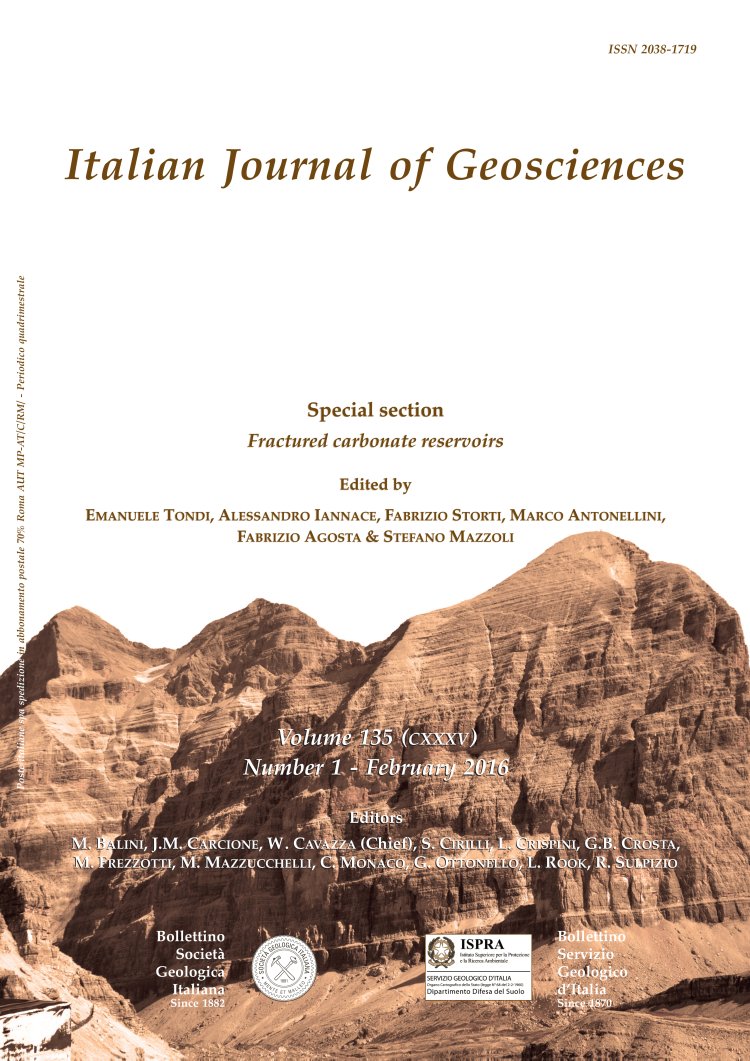
Mass-transport deposits within basinal carbonates from southern Italy
Danica Jablonská (*), Claudio Di Celma (*), Irina Korneva (*), Emanuele Tondi (*) & Ian Alsop (**)
(*) School of Science and Technology, University of Camerino, Camerino (MC) 620 32, Italy. Corresponding author, tel.: +39 3342003389; e-mail: danica.jablonska@gmail.com
(**) Department of Geology and Petroleum Geology, School of Geosciences, University of Aberdeen, AB24 3UE U.K.
Volume: 135 (2016) f.1
Pages: 30-40
Abstract
A detailed characterisation of submarine mass-transport deposits (MTDs), in terms of both emplacement processes and internal architecture of depositional products, is crucial to define the hydraulic properties of slope-to-basinal deposits.
The Late Jurassic-Early Cretaceous basinal Maiolica Formation exposed in the Gargano Promontory (southern Italy) represents an ideal natural laboratory to study the complex stratigraphic architecture of ancient MTDs. This formation consists of undisturbed intervals of flat-lying, thin-bedded, cherty micritic limestone inter-bedded with intervals of lithologically similar, but chaotic strata that are characterized by significant internal distortion. The stratigraphic thickness of these deformed units, which are interpreted to represent several types of mass movements (e.g., slumps and, to a lesser extent, slides and debris flows), varies from several decimetres to tens of metres. The internal deformation features comprise down-slope verging folds, together with both normal and reverse faults. In several places, the studied MTDs exhibit signs of reworking, as demonstrated by reactivation of the slump-related faults resulting in deformation of beds directly overlying the MTDs. Structural features within MTDs, provide information about the direction of the mass movement, and hence the orientation of the paleoslope. Measurements in the eastern and north-eastern part of Gargano Promontory suggest flow is directed towards the E and N respectively. The internal architecture of studied MTDs is discussed in the context of triggering mechanisms related to the characteristics of the Cretaceous paleoslope of the Apulian Platform.
The Late Jurassic-Early Cretaceous basinal Maiolica Formation exposed in the Gargano Promontory (southern Italy) represents an ideal natural laboratory to study the complex stratigraphic architecture of ancient MTDs. This formation consists of undisturbed intervals of flat-lying, thin-bedded, cherty micritic limestone inter-bedded with intervals of lithologically similar, but chaotic strata that are characterized by significant internal distortion. The stratigraphic thickness of these deformed units, which are interpreted to represent several types of mass movements (e.g., slumps and, to a lesser extent, slides and debris flows), varies from several decimetres to tens of metres. The internal deformation features comprise down-slope verging folds, together with both normal and reverse faults. In several places, the studied MTDs exhibit signs of reworking, as demonstrated by reactivation of the slump-related faults resulting in deformation of beds directly overlying the MTDs. Structural features within MTDs, provide information about the direction of the mass movement, and hence the orientation of the paleoslope. Measurements in the eastern and north-eastern part of Gargano Promontory suggest flow is directed towards the E and N respectively. The internal architecture of studied MTDs is discussed in the context of triggering mechanisms related to the characteristics of the Cretaceous paleoslope of the Apulian Platform.
Keywords
Get Full Text